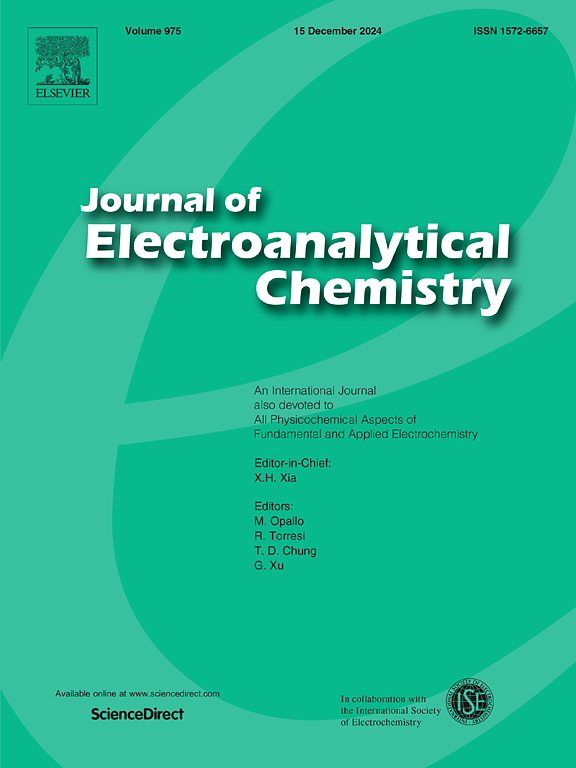Synthesize of NiSe2/Mo-MOF nanocomposite for sensitive determination of antiretroviral agent dolutegravir in pharmaceutical formulations and biological fluids
IF 4.1
3区 化学
Q1 CHEMISTRY, ANALYTICAL
引用次数: 0
Abstract
The precise detection of antiretroviral agents, such as Dolutegravir (DTG), is essential for effective HIV treatment and optimal patient management. This study presents the synthesis of NiSe2/Mo-MOF nanocomposite and its application as a modifier for the accurate detection of DTG in pharmaceutical formulations and biological fluids. NiSe₂ nanocrystals were synthesized using a modified hydrothermal method and subsequently incorporated into a Mo-MOF matrix through a solvothermal process. Characterization of the nanocomposite was performed using X-ray diffraction (XRD), scanning electron microscopy (SEM), Fourier-transform infrared spectroscopy (FT-IR), and electrochemical impedance spectroscopy (EIS). Electrochemical investigations demonstrated that the NiSe₂/Mo-MOF sensor exhibited excellent sensitivity, selectivity, and reproducibility, with a low detection limit of 3.68 nM for DTG. The superior performance of the sensor can be attributed to the synergistic interaction between NiSe₂ and Mo-MOF. This study demonstrates the potential of NiSe₂/Mo-MOF nanocomposites as efficient, reliable, and cost-effective electrochemical sensors, providing a promising platform for drug monitoring in clinical and pharmaceutical applications.

求助全文
约1分钟内获得全文
求助全文
来源期刊
CiteScore
7.80
自引率
6.70%
发文量
912
审稿时长
2.4 months
期刊介绍:
The Journal of Electroanalytical Chemistry is the foremost international journal devoted to the interdisciplinary subject of electrochemistry in all its aspects, theoretical as well as applied.
Electrochemistry is a wide ranging area that is in a state of continuous evolution. Rather than compiling a long list of topics covered by the Journal, the editors would like to draw particular attention to the key issues of novelty, topicality and quality. Papers should present new and interesting electrochemical science in a way that is accessible to the reader. The presentation and discussion should be at a level that is consistent with the international status of the Journal. Reports describing the application of well-established techniques to problems that are essentially technical will not be accepted. Similarly, papers that report observations but fail to provide adequate interpretation will be rejected by the Editors. Papers dealing with technical electrochemistry should be submitted to other specialist journals unless the authors can show that their work provides substantially new insights into electrochemical processes.

 求助内容:
求助内容: 应助结果提醒方式:
应助结果提醒方式:


